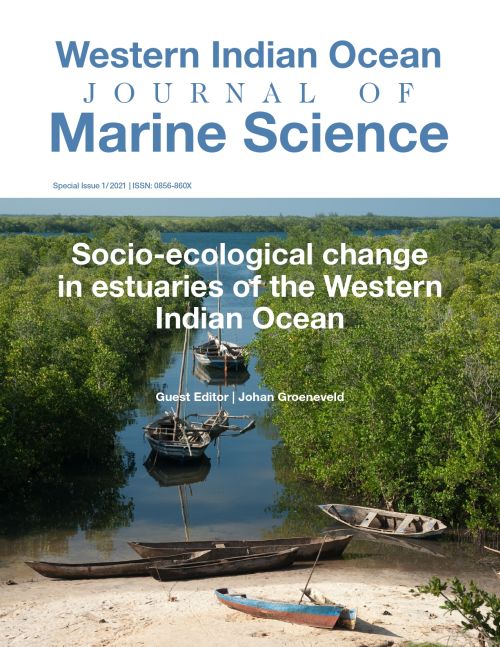Main Article Content
Natural resource-use in the Lower Tana River Delta based on household surveys and remote sensing of land cover and land use patterns
Abstract
Household survey data and spatially explicit Sentinel-2 satellite images of land cover and land use during the dry and wet seasons were used to investigate livelihood strategies in the Lower Tana River Delta in Kenya, where food security and economic activity rely almost exclusively on ecosystem goods and services. Land cover classification of satellite imagery successfully showed seasonal changes to estuary-related vegetation and habitats from which land use cycles could be inferred. Flood-recession agriculture and part-time fishing were the most common activities at Ozi village, some 10 km upstream from the estuary mouth, whereas full-time fishing dominated activities at Kipini town, where the Tana Estuary discharges into Ungwana Bay. Seasonality of fishing at Kipini depended on favourable sea conditions, arrival of migrant fishers and peaks in shrimp abundance. Seasonality of agriculture at Ozi depended on the freshwater flooding regime, visible in satellite images as an inverse relationship of areas covered by wetlands and cultivated lands. The predominance of fishing assets at Kipini indicated specialization, which underlies a socio-economic network of fish processing, marketing, distribution and logistical support services. In contrast, mixed farming assets and traditional fishing gear at Ozi reflected more diversified farmer-fisher livelihoods, as a risk avoidance strategy. Key outcomes of this study were that land cover and land use were strongly seasonal, that coastal and upstream communities in the Tana Estuary relied on different combinations of ecosystem goods and services, and that livelihood strategies at the two locations differed fundamentally. Combining social, spatial and ecological data to describe socio-ecological systems typical of the Tana Estuary provided a broad platform for shared resource management strategies.






